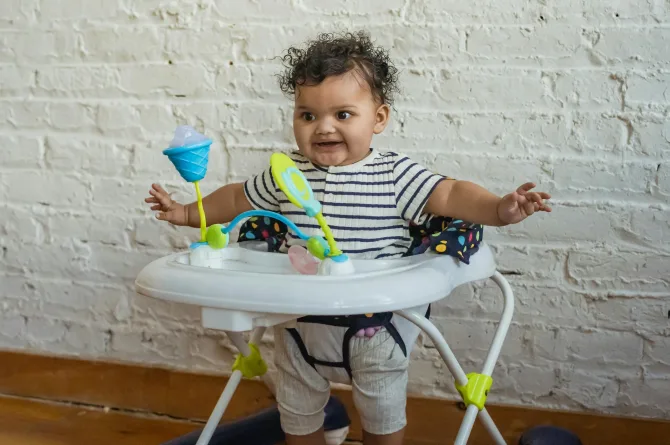Do Baby Walkers Delay Walking in Babies? Unveiling the Truth
Baby walkers are popular devices among parents, designed to support infants as they learn to walk. Despite their popularity, there is growing concern among pediatricians and child development experts regarding the potential impact of walkers on natural walking milestones. This article delves into whether baby walkers actually delay walking in babies, exploring the associated risks and benefits, and offering advice on safer alternatives for encouraging a child’s mobility.
Understanding Baby Walkers
Baby walkers typically consist of a fabric seat with leg holes, attached to a wheeled frame. Infants are placed in the seat so that their legs dangle and push against the floor, allowing them to scoot along. Walkers are intended to entertain babies and give them a taste of mobility before they can walk independently.
The Concern: Delay in Natural Walking Development
Research Insights
Several studies have suggested that baby walkers might not only be ineffective in promoting walking but could actually delay the development of walking skills. A 1999 study published in the Journal of Developmental & Behavioral Pediatrics found that babies who use walkers learn to walk about a month later than those who do not. Researchers argue that walkers enable babies to move around before they are physically ready for walking, which may interfere with their natural progression of skills such as crawling and pulling up to stand.
Physiological Considerations
The use of walkers may encourage abnormal gait patterns. In a walker, babies do not need to use their muscles in the same way they would if they were getting around on their own. This can lead to underdeveloped muscle strength and balance, which are crucial for walking.
Potential Risks Associated with Baby Walkers
Safety Concerns
Beyond developmental delays, baby walkers pose significant safety risks. According to the American Academy of Pediatrics (AAP), thousands of children are injured every year due to walker-related accidents. Common injuries include falls down stairs, tipping over, and accessing dangerous items that would otherwise be out of reach.
Cognitive and Perceptual Impact
There is also concern that baby walkers might hinder mental and perceptual development. The limited range of environments that a walker allows a baby to explore can restrict visual and spatial learning, as well as opportunities for interaction, problem-solving, and other cognitive skills.
Alternatives to Baby Walkers
Considering the potential drawbacks of baby walkers, many experts recommend alternative methods to support a child’s journey to walking:
Stationary Activity Centers
These centers provide various activities to engage babies while safely containing them in one spot. They encourage reaching, stretching, and strengthening of the core muscles without the risks associated with mobility.
Push Toys
Safe, child-specific push toys can help babies practice standing and balancing, using their own strength and skills. These toys encourage natural body alignment and muscle use during movement.
Supervised, Unrestricted Floor Time
Allowing ample time on the floor to crawl, roll, and explore can be the most beneficial for motor development. It helps babies build the muscle strength and coordination they need for walking and other milestones.
Conclusion
While baby walkers might seem like a fun way to give babies a sense of mobility, evidence suggests that they may delay not only walking but also overall motor development and potentially expose children to higher risks of injury. Parents and caregivers are encouraged to consider safer alternatives that support natural growth and development.
Encouraging walking involves patience and support. Providing a safe, enriching environment where your child can explore freely on their own may be the best way to support their development. The joy of watching a child take their first steps is worth the wait and effort involved in fostering their natural progression toward walking.




